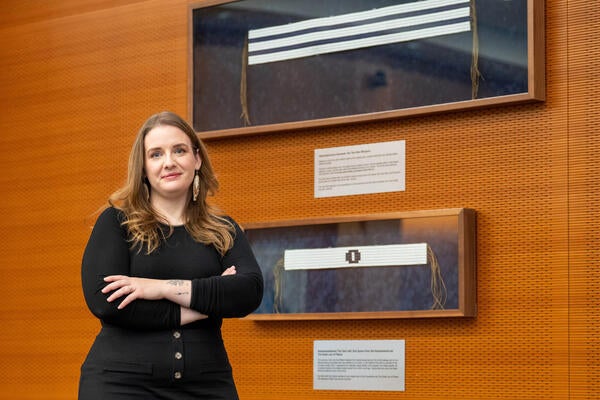
New technique can capture images of ultrafast energy-time entangled photon pairs
Scientists at the Institute for Quantum Computing (IQC) at the University of Waterloo have captured the first images of ultrafast photons that are energy-time entangled

Scientists at the Institute for Quantum Computing (IQC) at the University of Waterloo have captured the first images of ultrafast photons that are energy-time entangled
By Media RelationsThe new technique will have direct applications for quantum cryptography and communication protocols, including the possibility for establishing highly secure communication channels over long distances.

Jean-Phillipe MacLean works in his lab.
“This technique will allow us to explore all sorts of quantum effects that were inaccessible because the detectors were simply too slow,” said Jean-Phillipe MacLean, lead author of the study and a PhD candidate in Waterloo's Faculty of Science.
To capture one of the shortest quantum events possible, the researchers used a technique known as optical gating. Similar to the way Harold Edgerton used high-speed strobe lights to capture some of the most iconic images of the 20th century, the device uses short pulses of light to image the photons in time. This technique allowed the researchers to surpass the limitations in current detectors and measure entangled pairs of photons with a resolution below one trillionth of a second.
“In the last 10 to 20 years, researchers have been interested in exploring and exploiting energy-time entanglement for communication,” said MacLean. “By being able to measure ultrafast entangled photons, our measurement technique opens the door to exploiting entanglement in a whole new regime.”
Energy-time entanglement is a feature of quantum light. It occurs when a pair of photons are strongly correlated in both their frequency and time of arrival. Scientists have been interested in exploiting energy-time entanglement for quantum information but, until now, they lacked the resolution in both energy and time to directly observe it.
The new apparatus brings a tool frequently relied upon in classical optics research to the quantum world. In classical optics, the ability to accurately measure both the energy and time features of light on ultrafast timescales has been critical to innovations in laser physics and spectroscopy.
“Ultrafast and quantum represent two frontiers of optical science,” said Kevin Resch, interim executive director at IQC and a professor in Waterloo's Faculty of Science. “Bringing techniques from one of these areas over to the other opens up exciting possibilities.”
The study is published in Physical Review Letters.
-30-

Harold Edgerton Digital Collection © 2010 MIT. Courtesy of MIT Museum.
A very short event like the one above requires a strobe light to freeze the action with an exposure time only a few microseconds long, or one millionth of a second. Optical gating, the technique used by the team of researchers at IQC, acts like the strobe light in the picture, allowing them to effectively image the entangled photon pairs with a resolution below one trillionth of a second.
-30-

Read more
Waterloo researchers have developed a new quantum computing approach that brings science closer to simulating the early universe

Read more
New research from the University of Waterloo centres Haudenosaunee-led efforts in the repatriation and reclamation of cultural and intellectual property

Read more
Astronomers spot massive gas streams flowing from ultra-hot Jupiter that rewrite expectations for these massive giants of space
The University of Waterloo acknowledges that much of our work takes place on the traditional territory of the Neutral, Anishinaabeg, and Haudenosaunee peoples. Our main campus is situated on the Haldimand Tract, the land granted to the Six Nations that includes six miles on each side of the Grand River. Our active work toward reconciliation takes place across our campuses through research, learning, teaching, and community building, and is co-ordinated within the Office of Indigenous Relations.